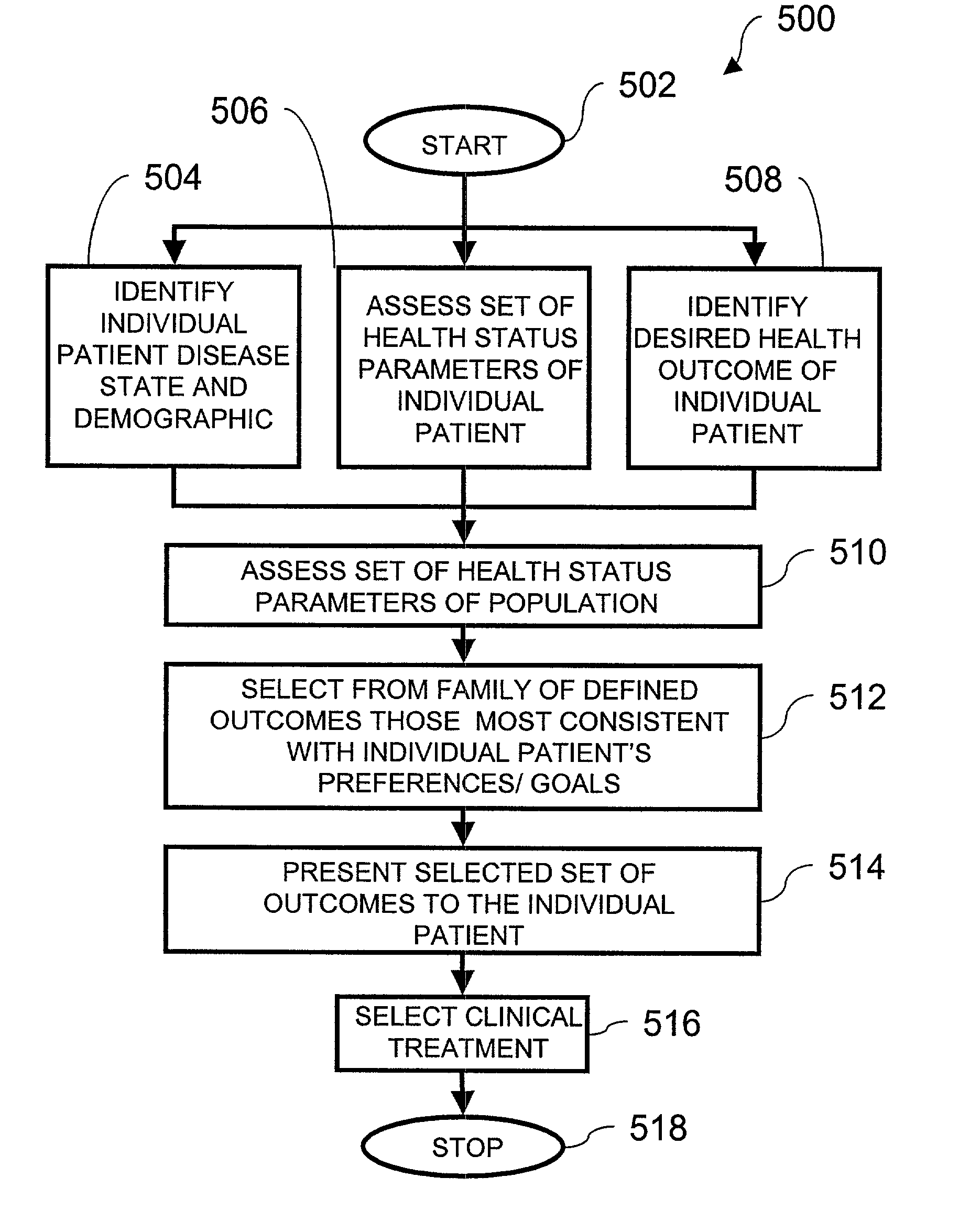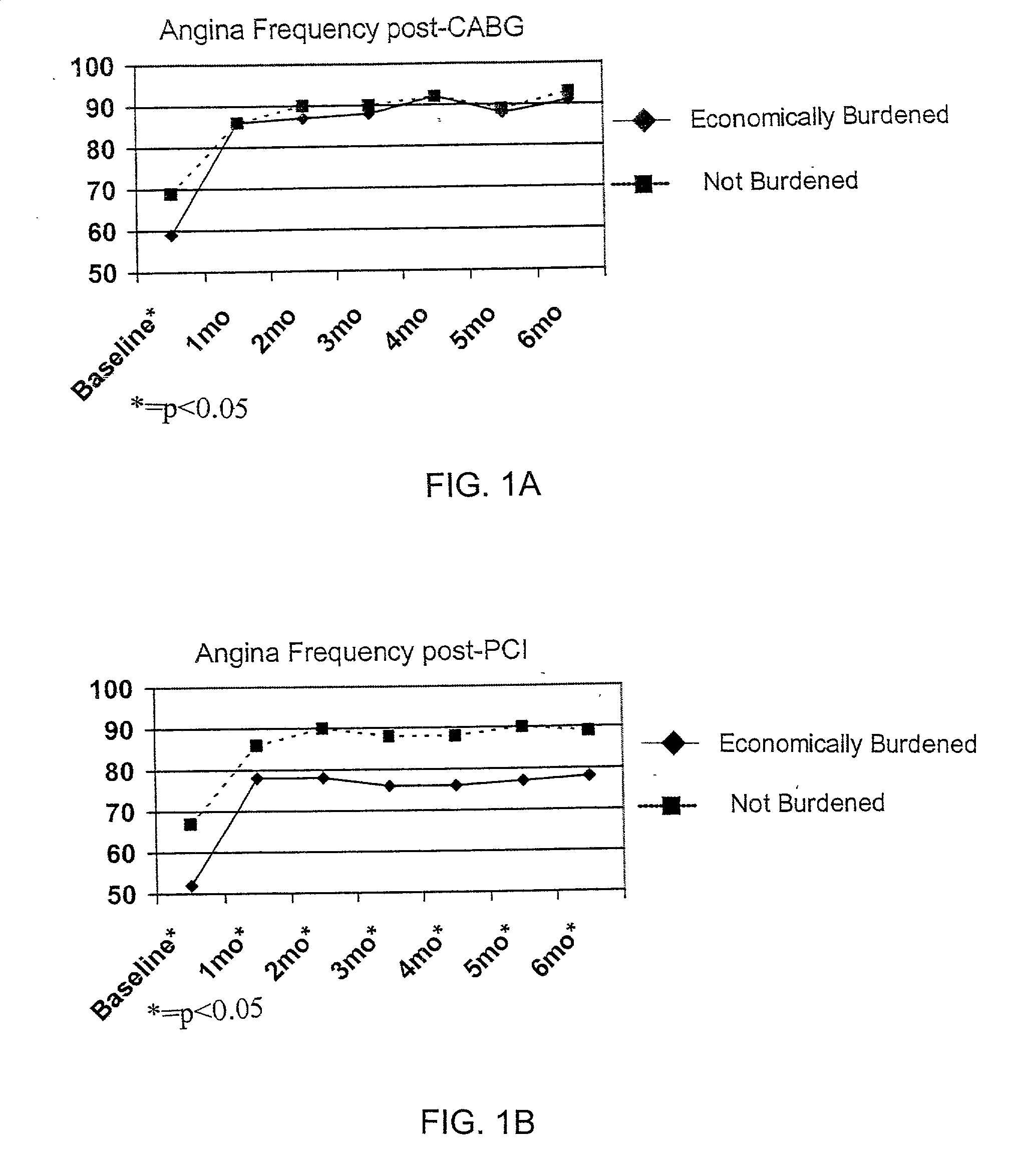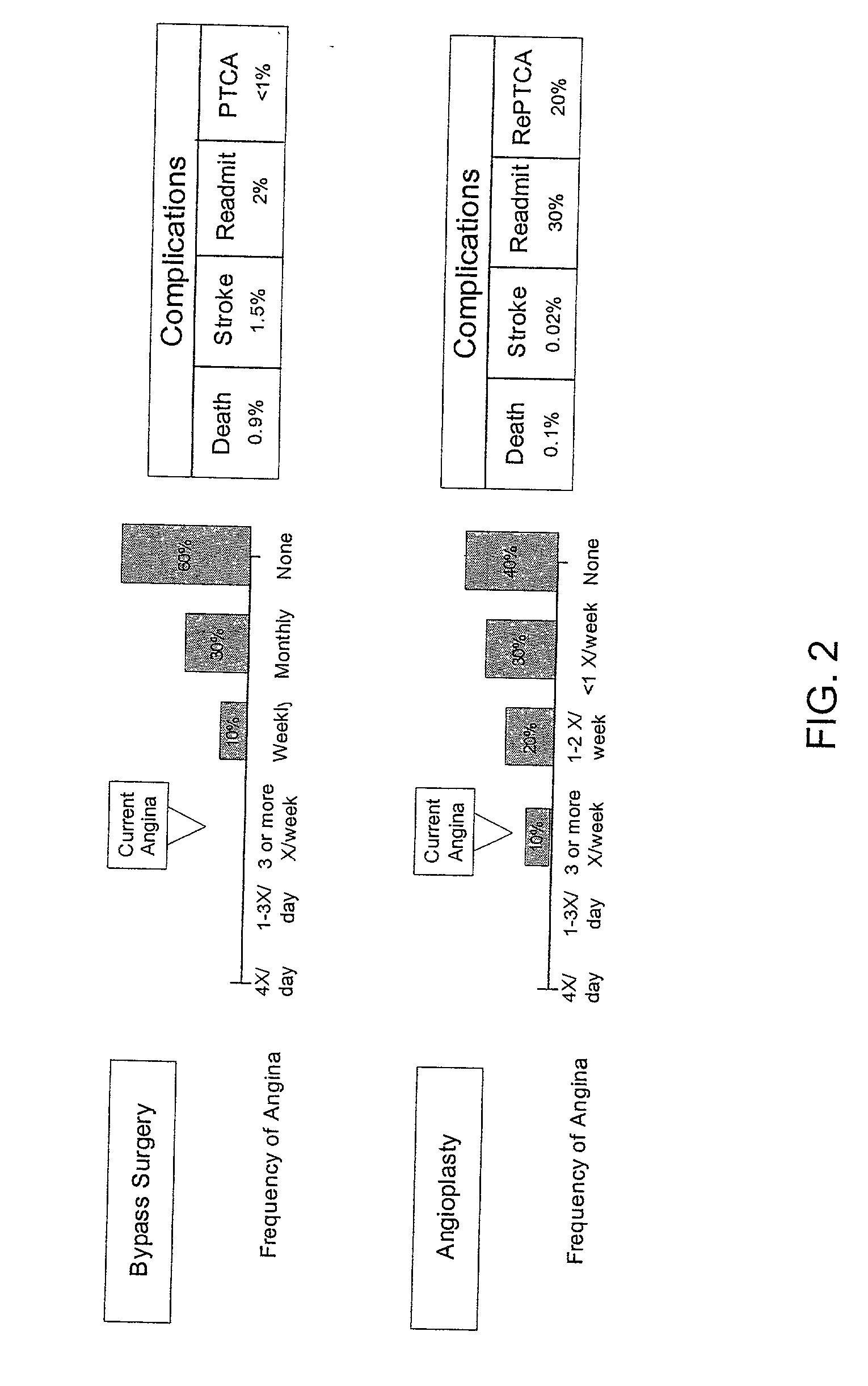Method for selecting a clinical treatment plan tailored to patient defined health goals
a clinical treatment and health goal technology, applied in the field of clinical treatment plan assessment and selection, can solve the problem that no such method for post-coronary event patients is described or availabl
- Summary
- Abstract
- Description
- Claims
- Application Information
AI Technical Summary
Problems solved by technology
Method used
Image
Examples
example 2
Angina Frequency
[0039] The present example demonstrates the utility of the invention for considering health status rather than survival for managing the health care options to be presented to a patient. The present example also illustrates the utility of a new set of risk-stratification variables that are important in the medical decision variables that are important in the medical decision making process. The present example also demonstrates the utility of the present example as an efficient mechanism of collecting data about patient's current health status and of new risk-stratification variables that are useful in projecting anticipated outcomes.
[0040] The present invention further presents the inclusion of interdual patient data that is being accumulated through each new decision making event, back into the pool of data or population data that may be used / is used in a subsequent pool of patients. In this manner, the population database is constantly being updated, as well as op...
##ic example 3
PROPHETIC EXAMPLE 3
Identification of Determinants of Health Status
[0044] The key determinants of health status (symptoms, function, quality of life) after PCI and CABG through robust analyses of an existing database. Using the types of data described in the Table above, we will determine the key predictor variables for angina frequency, physical limitation and quality of life as measured by 12-month, post-procedure SAQ scores will be tabulated and statistically analyzed.
2 TABLE 2 Procedural Data Outcome Data Number of diseased vessels Seattle Angina Questionnaire Percent Sterosis Short Form -12 Ejection Fraction EuroQOL Technique of revasc variation Hospitalizations Treatment success Repeat procedures Complications Survival
[0045] Data reduction will be done with clustering, stepwise variable selection and factor analysis techniques to identify the most parsimonious set of data that needs to be collected. Internal (bootstrap) validation and comparisons with external data sources will...
##ic example 4
PROPHETIC EXAMPLE 4
Computer Program Using Observational Data Bases for Revascularization Decision Making Processes
[0047] Observational databases will be used to facilitate treatment decisions for patients considering revascularization. The PREDICT.TM. instrument provides the vehicle that will be employed to accomplish this task. Four distinct components create PREDICT.TM.. First, an interface for data collection is required. Second, a software program takes collected created so that collected data may be transformed into clinically meaningful distributions of projected outcomes. Third, a mechanism for customizing PREDICT.TM.'s output so that patient-valued and readily interpretable outcomes may be displayed. And finally, the infrastructure for tracking outcomes of patients using PREDICT.TM. must be created so that the system can continue to grow as new treatment technologies are introduced.
[0048] PREDICT.TM.'s networked software architecture optimization algorithms. To assist in kee...
PUM
 Login to View More
Login to View More Abstract
Description
Claims
Application Information
 Login to View More
Login to View More - R&D
- Intellectual Property
- Life Sciences
- Materials
- Tech Scout
- Unparalleled Data Quality
- Higher Quality Content
- 60% Fewer Hallucinations
Browse by: Latest US Patents, China's latest patents, Technical Efficacy Thesaurus, Application Domain, Technology Topic, Popular Technical Reports.
© 2025 PatSnap. All rights reserved.Legal|Privacy policy|Modern Slavery Act Transparency Statement|Sitemap|About US| Contact US: help@patsnap.com



